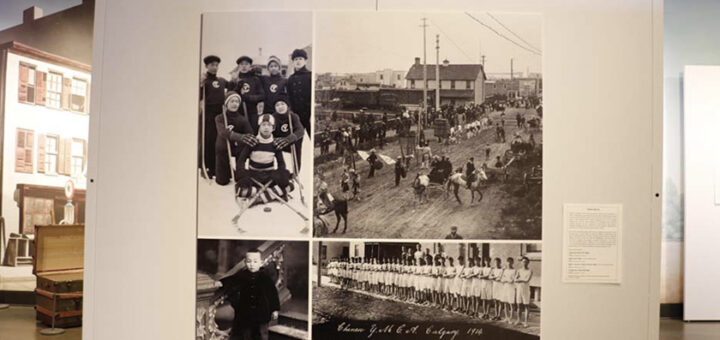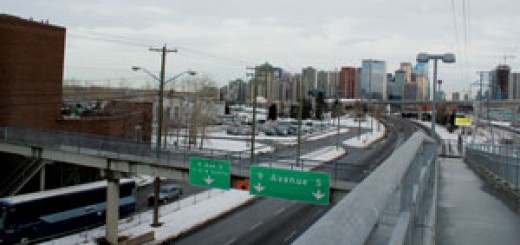Calgary Chinatown’s history re-illustrated in new exhibit

Isabella West, Contributor
Heritage Park is taking important steps towards creating a diverse and accurate representation of historical Western Canada.
We Were Here: Stories from Early Chinatown is an exhibit hosted by Heritage Park in Calgary. The exhibit originated at Lougheed House but relocated to Gasoline Alley at Heritage Park once the two museums partnered. The exhibit runs from Jan. 14 to April 30, 2023.
The exhibit features fictional stories created by members of the Calgary Chinese community, allowing visitors to learn about Chinese history in early Western Canada through art and imagination. Although the stories featured at the exhibit are fictional, there are many authentic donated artifacts on display.
Kesia Kvill, chief curator at Heritage Park, understands the importance of diversifying the park in order to ensure everyone has the opportunity to share their stories and heritage.
“For us, it’s kind of that first step in really committing to making sure that everyone feels that they have an opportunity to be seen and tell their stories at Heritage Park,” says Kvill.
As a way to ensure that the museum accurately depicts the Chinese community in historical Western Canada, they partnered with Dale Lee Kwong, a Calgary citizen of Chinese roots, and other members of the Chinese community who want to preserve Chinatown.
Kwong, co-curator, says that she has many connections to the exhibit. Firstly, Kwong’s story, “His Gift,” is being featured in the exhibit. It is a tale inspired by the life and journey of a Chinese immigrant known as Jimmy Smith. Her second connection is through her father, Jack.
Jack Kwong donated traditional clothing in the 1990s which can be seen on display. Lastly, Kwong has a rich knowledge of Chinese culture through her own cultural background, which is why she was consulted for this exhibit.
Kwong says that although the exhibit is temporary, “You have to start somewhere,” which is why it’s notable that Heritage Park is trying to take the correct steps towards diversifying the Calgary landmark.
The exhibit explores the history of Calgary’s first two Chinatowns which were moved multiple times because of pressures from the government and other settlers who sought the land for other purposes. Because of this, there are no known artifacts from the first two Chinatowns which is why the exhibit relies on fictional stories and illustrations to tell the story.
Chinese immigrants in Western Canada date back to the mid-1800s during the time of the gold rush and the construction of the Canadian Pacific Railway. After construction of the railway was complete, many immigrants settled in towns across Western Canada, Calgary being one of them. Soon, Calgary’s first Chinatown developed as the Chinese community’s established businesses and places of residence.
“Chinatown has a vibrant past as well as a dark past. So it was a space of both exclusion and inclusion,” says Kvill.
Once the railway was complete, the Canadian government imposed a “head tax” of $50 on Chinese immigrants which escalated to $500 soon after. The head tax was imposed as a way to slow Chinese immigration thus leading to the Chinese Exclusion Act of 1923.
Despite discrimination, the early Chinese community in Calgary remained resilient. Calgary’s Chinatown became an enclave.
“It was where people who were Chinese went to feel safe and find services that they couldn’t find anywhere else because they wouldn’t be served or they wouldn’t be welcomed. So it formed a community out of necessity, but then I think it has really evolved into a community that is celebratory and has worked together to really reclaim that space from being an enclave to being a place of safety and a celebration,” says Kvill.
Heritage Park wants to signify that they are put in place to support and engage the community. “Our community is broad and big, and vibrant and diverse,” says Kvill, which is why they are taking action towards telling diverse stories and histories.
“As an Asian person, seeing my culture represented so thoroughly at Heritage Park was just overwhelming and touching. Feeling seen when normally you are invisible, was a big deal,” says Kwong.






